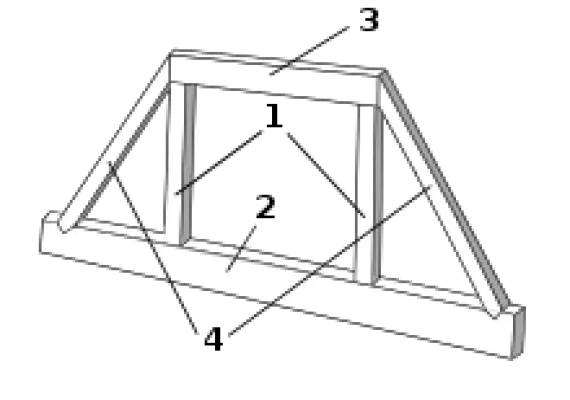What Is Structural Carcassing In Construction?
What Is Structural Carcassing In Construction?
Structural carcassing, also known as structural framing or framing, refers to the construction method of creating a framework of large, strong structural elements that provide support for the weight of the building and transfer the loads to the foundation.
The structural carcassing system typically includes vertical studs or columns, horizontal beams or joists, and diagonal bracing or ties that are fastened together using various methods such as nails, bolts, screws, or adhesives.
The materials used in structural framing can include wood, steel, concrete, or other composite materials.
Once the structural framing is in place, other building components such as walls, floors, and roof systems can be attached to the framing members to complete the building’s overall structure.
The structural carcassing system is critical to the safety and stability of the building, and it must be designed and constructed to meet the necessary codes, standards, and regulations to ensure the safety of the occupants and the longevity of the building.
Generally, structural carcassing in construction is the main shell, frame or skeletal structure of a building.
It may or may not be the overall structural or load-bearing element of a building as it also refers to individual components such as floor joists, roof battens, roof trusses, cladding, decking supports and studwork for partitioned walls.
Structural carcassing is included in section G of the common arrangement of work sections classification (CAWS) along with structural elements such as Structural / Carcassing Metal (G1) and Structural / Carcassing timber.
Carcassing timber is designated due to its strength and durability and can be made from softwoods and hardwoods, with stronger options available for load-bearing applications.
In most cases carcassing timber has been pressure treated and kiln dried before being graded.
The treatment process will involve applying a mixture of chemicals designed to increase the strength and durability of the timber.
G Structural/ Carcassing Metal/Timber Checklist includes items such as G10 Structural steel framing, G11 Structural aluminium framing, G12 Isolated structural metal members, G20 Carpentry/Timber framing/First fixing, G21 Load-bearing timber blockwork, G23 Post and Beam frame, G26 SIPS Structural Insulated Panel Systems, G27 ISPS insulated structural panel system and G31 Prefabricated timber unit decking.
What Is Carcassing Wood Used For?
Carcassing timber is a type of wood that is used in structural applications such as floor joists, roof battens, roof trusses, cladding, decking supports and studwork for partitioned walls.
It is typically made from softwoods and hardwoods and can be pressure treated and kiln dried before being graded.
Carcassing timber is available in a range of sizes depending on the load required and the length needed.
It is most commonly used in construction where load bearing and support is required.
Common uses for carcassing timber include suspended ground floor joists, roof joists, loft joists, rafters, fencing panels, pallets and other packaging materials.
What Timber Is Used For Carcassing?
Carcassing timber is a type of timber used for structural building components such as floor joists, roof battens, roof trusses, cladding, decking supports and studwork.
It is usually made from softwoods or hardwoods and can be pressure treated or kiln dried to increase its strength.
The most common types of wood used in carcassing timber are European Redwood or European Whitewood, although other types of wood may also be used.
Carcassing timber is available in a wide range of sizes and can be graded for load-bearing applications.
Pressure-treated carcassing will last longer than untreated varieties. Eased-edge C16 kiln dried treated softwood carcassing timber is commonly used where a grading stamp is required.
What Is The Difference Between C16 And C24?
C16 and C24 are two of the most commonly used grades of timber in the UK. The ‘C’ grading simply means conifer, the type of tree the timber is made from, while the number denotes its strength.
C16 timber is the most common type of carcassing timber in the UK and is incredibly versatile and cost-effective.
C24 timber is also widely used in the UK, though not as much as C16 due to its higher price, which is largely down to its superior strength and appearance.
C16 timber can have some defects that impact its overall appearance, whereas C24 graded timber has less visible defects and a more uniform appearance.
In terms of strength, C24 timber offers superior performance compared to C16. This is demonstrated by specific measurements such as bending strength (C24: 20N/mm2; C16: 17N/mm2) and compression strength (C24: 30N/mm2; C16: 24N/mm2).
Whether to choose C16 or C24 depends on factors such as budget, desired appearance, and required strength.
If cost-effectiveness is a priority, then C16 may be a better option, whereas if unvarnished visibility or superior strength are desired then C24 may be preferable.
